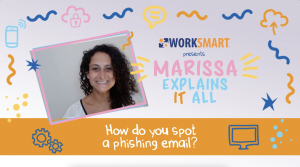While we work hard to prevent security threats from happening, they’re never completely avoidable. We often say it’s now no longer a matter of if they happen, but when they happen. When something slips through your security defenses, you need to be prepared.
In these situations, response time is key. The faster you can identify the potential risk, the faster you can stop it in its tracks and minimize the damage. Managed Threat Response (or MTR for short) is a security solution that takes threat notification to the next level as it hunts for, identifies, and takes action against even the most sophisticated threats.
Curious how it works? Check out the short video below. For more cybersecurity tips, continue scrolling.
Summer Series: Episode 3
More Cybersecurity tips:
Vulnerability Scanning vs. Penetration TestingCybersecurity threats are continually evolving and it’s important to make sure that your organization is keeping up with those risks. Vulnerability scans and penetration tests are two proven tools that work to identify potential threats to your system before it’s too late. While they are similar in nature, there are a few key differences between the two. To learn more about the difference between the two and why they are important, check out Marissa’s 60(ish) second explanation here! |
 |
How to Spot a Phishing EmailEmail is one of the most commonly used methods of communication in the workplace, however, it’s also one of the most targeted areas for cybercriminals. Phishing is a technique that hackers use to impersonate a trusted source and try to get any personal or sensitive information from you. These emails can come in many different forms, so it’s important to stay vigilant when it comes to keeping your account secure. Check out this 60-second clip to hear Marissa’s best tips on spotting these phishing emails before it’s too late. |
 |


